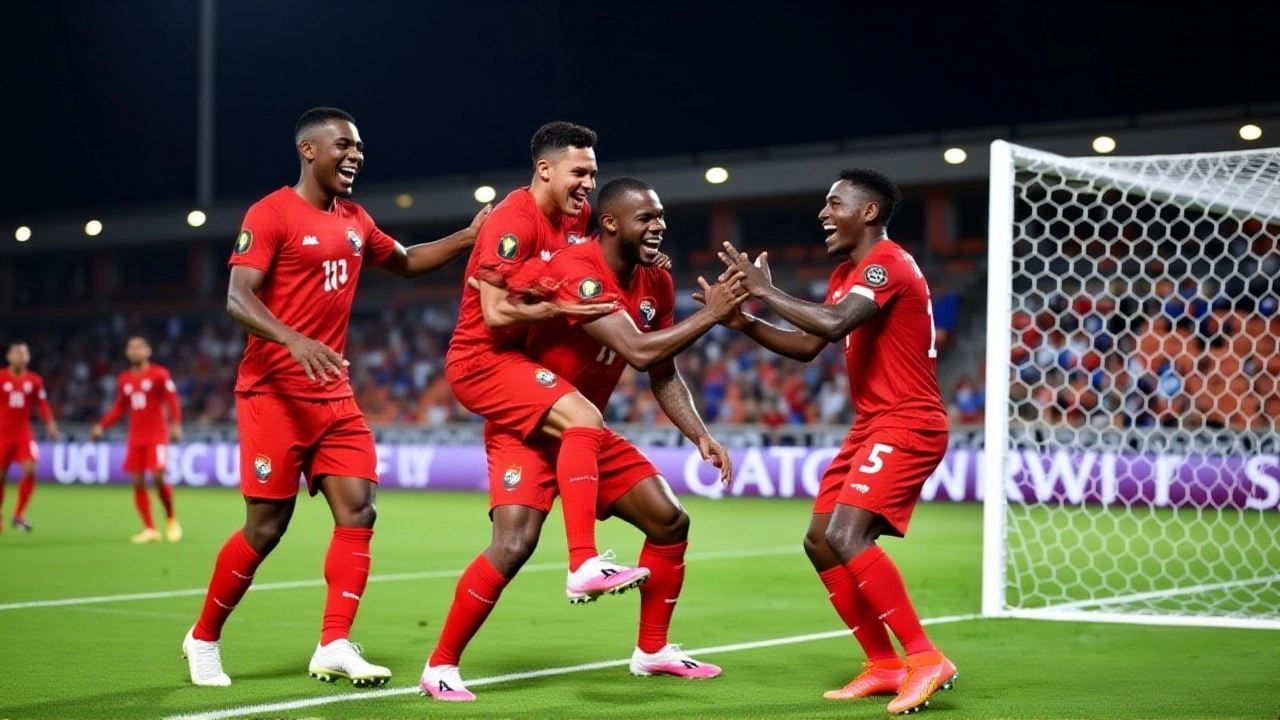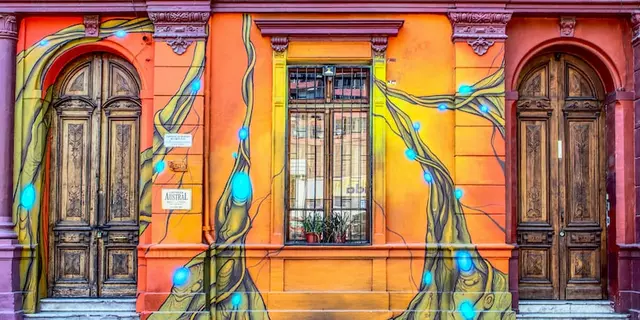When Jose Luis Rodriguez buried the final goal in the 59th minute, the roar at Estadio Rommel Fernandez didn’t just celebrate a goal—it erupted for a dream realized. Panama had done it: a 3-0 demolition of El Salvador on the final CONCACAF World Cup Qualifying matchPanama City on November 18, 2025, sent them to their second-ever FIFA World Cup. And it wasn’t just a win—it was a statement.
A Perfect Run, Perfectly Executed
Panama didn’t just qualify—they dominated. Finishing the third round of CONCACAF qualifying with a flawless 3-3-0 record (12 points, +5 goal difference), they were the only team in their group to go unbeaten. While rivals like Suriname and Guatemala stumbled down the stretch, Panama stayed steady, clinical, and calm. Their 3-0 win over El Salvador wasn’t an accident. It was the culmination of six matches where they never lost, never blinked, and always answered when it mattered. The first half was a masterclass in pressure. Panama peppered El Salvador’s defense, hitting the post twice, forcing three saves from goalkeeper Jose Gonzalez, and creating chances that could’ve made it 5-0 by halftime. "It could have been probably should have been a couple more goals," noted CBS Sports Golazo commentator. The breakthrough came at 17’ when a sharp pass from Alfredo Pacheco found Yordy Reyna, who tucked it past Gonzalez. By 35’, a rebound from a Abel Ruiz shot found Jeison Medina in the box—he made no mistake. Two goals, no response from El Salvador.The Substitute Who Sealed History
Then came the moment fans will replay for decades. With 59 minutes on the clock, substitute Jose Luis Rodriguez—who’d entered just 12 minutes earlier—was in the right place at the right time. A saved shot from Kevin Rodriguez rebounded into the box. Keto, as he’s known, pounced. One touch. One finish. The net bulged. "Rodriguez scores. Panama’s going to the World Cup," the commentator screamed. The stadium exploded. Fireworks lit up the Panama City night. Players collapsed to their knees. Some cried. Others ran straight to the bench, hugging their substitutes like they’d just won the lottery. It wasn’t just emotional—it was symbolic. Rodriguez, 26, had spent most of the qualifying campaign on the bench. His goal wasn’t just the third of the night. It was the final nail in El Salvador’s coffin. And for Panama, it was the exclamation point on a historic campaign.El Salvador’s Collapse
Meanwhile, El Salvador finished last in the group with just one win in six matches—3 points total, a -9 goal difference. Their lone victory came against Guatemala in September, but they lost to Panama twice, to Suriname twice, and to Guatemala once. Their defense looked disorganized. Their midfield was outmuscled. And their attack? Nonexistent. They managed just one shot on target all night. "They had no answer," said former Salvadoran international Carlos Menjivar in post-match analysis. "They came in expecting to defend. But Panama didn’t just attack—they controlled. Every pass, every run, every press. They were the better team in every way. And that’s why they’re going to the World Cup. Not because they got lucky. Because they earned it."
What This Means for Panama
This is only the second time Panama has qualified for the World Cup—first was in 2018, when they stunned the world by beating the USA in the final qualifier. Now, they return to the biggest stage in soccer, joining the three host nations: the United States, Canada, and Mexico. Their group stage opponents aren’t yet known, but their confidence is sky-high. They’ll enter the tournament with a core of players who’ve played together for years: Roman Torres in defense, Blas Perez as the veteran leader, and now Jose Luis Rodriguez as the unlikely hero. Their style—fast transitions, high pressing, disciplined set pieces—has matured under coach Ernesto Brown, who’s quietly built one of CONCACAF’s most consistent teams.What’s Next?
Panama’s next step: preparation. Training camps begin in January. Friendly matches against South American sides are already scheduled. They’ll look to test themselves against higher-ranked teams before June’s World Cup kickoff. Meanwhile, El Salvador faces a long rebuild. Their federation has already announced a youth-focused overhaul, targeting players under 23 for the next cycle. The contrast couldn’t be starker. One nation celebrating on a cloud of fireworks. The other packing their bags, wondering what went wrong.
Behind the Numbers
- Panama: 6 matches, 3 wins, 3 draws, 0 losses, 12 points, +5 goal difference - El Salvador: 6 matches, 1 win, 0 draws, 5 losses, 3 points, -9 goal difference - Match attendance: 32,100 at Estadio Rommel Fernandez - Temperature: 78°F, 6 mph NW wind - Pre-match odds: Panama -680 (bet $680 to win $100); El Salvador +1680 (bet $100 to win $1,680) - Over/under: 2.5 goals (over -182, under +136)Timeline of Key Moments
- 17’ — Yordy Reyna opens scoring
- 35’ — Jeison Medina doubles lead
- 59’ — Jose Luis Rodriguez seals qualification
- 71’ — Panama hits crossbar
- 75’ — El Salvador’s only shot on target
- 90+1’ — Final whistle: Panama 3, El Salvador 0
Frequently Asked Questions
How many times has Panama qualified for the World Cup before?
Panama has qualified for the World Cup twice: first in 2018, when they famously beat the United States in their final qualifier, and now in 2026. Their 2018 appearance was historic—they became the smallest nation by population to qualify since Iceland. This second qualification cements them as a rising force in CONCACAF, not just a one-time surprise.
Who scored Panama’s goals in the decisive match?
Yordy Reyna opened the scoring in the 17th minute, Jeison Medina added the second in the 35th, and substitute Jose Luis Rodriguez sealed the win with the third in the 59th. All three goals came from inside the box, showcasing Panama’s precision in the final third. Rodriguez’s goal was especially significant—it was his first international goal and came off the bench, highlighting Panama’s depth.
Why did El Salvador perform so poorly in the qualifiers?
El Salvador’s campaign was plagued by defensive disorganization and lack of creativity. They conceded 15 goals in six matches—the worst in the group. Their only win came against Guatemala, but they lost both games to Panama and were thrashed 4-0 by Suriname. Injuries to key midfielders and poor tactical adjustments by coach Julio Dely Valdés left them outmatched by faster, more disciplined teams.
What does Panama’s qualification mean for CONCACAF’s World Cup representation?
With Panama joining the U.S., Canada, and Mexico, CONCACAF now has four automatic qualifiers for the 2026 World Cup—the most ever. Panama’s success shows that the region’s depth is growing. Teams like Jamaica, Costa Rica, and Honduras are also improving, making qualifying more competitive than ever. This isn’t just about the big three anymore; Panama proved smaller nations can compete at the highest level.
What’s the significance of Jose Luis Rodriguez’s goal?
Rodriguez’s goal wasn’t just the winner—it was the symbolic capstone of Panama’s campaign. He wasn’t a starter, wasn’t even a regular substitute. But when called upon, he delivered. His goal came from a rebound, a moment of instinct, and it echoed through Panamanian football history. He’s now the man who sealed their return to the World Cup after seven years—and he did it with calm under pressure.
How did the crowd react during the match?
The Estadio Rommel Fernandez was electric from kickoff. Fans waved flags, sang the national anthem louder than ever, and stayed on their feet for every attack. When Rodriguez scored, fireworks lit the sky and smoke bombs filled the stands. Social media exploded with videos of fans hugging strangers, crying, and chanting "¡Panama en el Mundial!" It was a night that united the country—not just in celebration, but in pride.





